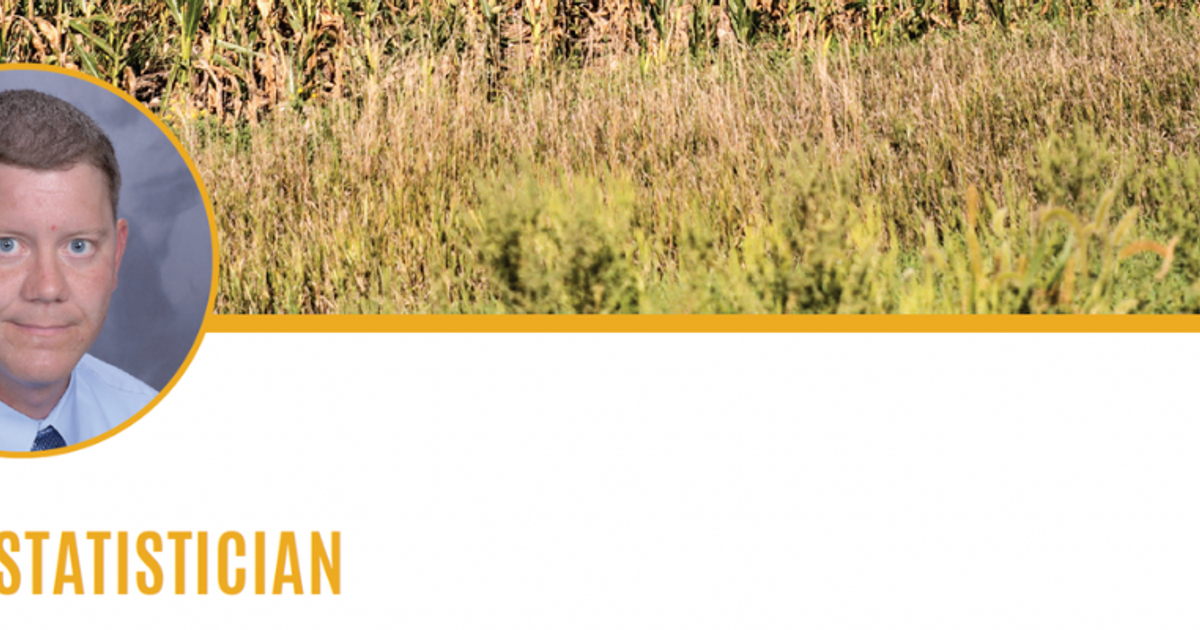STATE STATISTICIAN: GERLACH KNOWS THE NUMBERS

Erik Gerlach is a numbers guy. As the state statistician for the USDA National Agricultural Statistics Service (NASS), he oversees a wealth of ag data and is committed to disseminating statistics that are current and accurate.
NASS is the go-to resource for just about any agriculture-related topic. It has an enormous, seemingly boundless, collection of statistics covering farms and ranches, livestock, crops, demographics and economics. Statistics are categorized geographically by national, state, region, county, even zip code.
A key part of Gerlach’s job is maintaining relationships with top-level government and private-sector officials who are involved in the agricultural economy. He communicates with ag media and extension professionals to provide and interpret statistics. In a nutshell, he’s a local resource for anyone looking for ag data. Access to such resources is vital.
“There needs to be a level playing field for producers in terms of making market decisions and how markets function for them,” Gerlach said. “Combined with that, with anyone writing a story about policy or informing people who don’t know what’s going on at farms and ranches, it’s important to be able to do that with unbiased data. Combine the two and that’s why timely, accurate statistics are so essential.”
He said it’s also important to educate people who don’t have farm backgrounds or knowledge. For example, NASS data shows what type of economic impact farms and ranches make.
Gerlach, who grew up on a farm east of Corsica, didn’t have this career in mind when he enrolled at South Dakota State University. His goal was to become an agronomist. However, as he was applying for jobs, he came across an opening for a farm loan officer with USDA’s Farm Service Agency and that steered him down a different path.
From the FSA, he moved on to NASS, spending three years each in Nevada, Minnesota and Washington, D.C. before settling into his current role in South Dakota nine years ago. His bachelor’s degree in agronomy and a master’s in economics are an ideal fit for his job.
Out of all the NASS data, the most-anticipated and publicized are the quarterly reports, he said. The March report focuses on grain stocks and prospective plantings; June’s report includes what was actually planted; the September report is small-grains production; December is a report on field-crop production.
“Those are where we see the most headlines, the most possible market movement,” Gerlach said. “In a supply-and-demand market, we need information on what the actual supply and demand might be. NASS is on the supply side.”
The biggest undertaking is the ag census, which is compiled every five years – years ending in 2 and 7.
NASS makes its data available at www.nass.usda.gov. The site includes a Quick Stats database designed to simplify searches. If anyone has questions or concerns, Gerlach encourages them to contact him at erik.gerlach@usda.gov.
Not everyone is always happy about reports issued by NASS or thrilled about participating in surveys but Gerlach stresses their importance.
“As an analogy, I referee basketball and volleyball. Not everyone is happy you’re there, but you can’t play the game unless there’s somebody to make the decisions to allow the game to go on,” he said. “Otherwise, as they say, if there are no officials there, it’s just called recess.”




